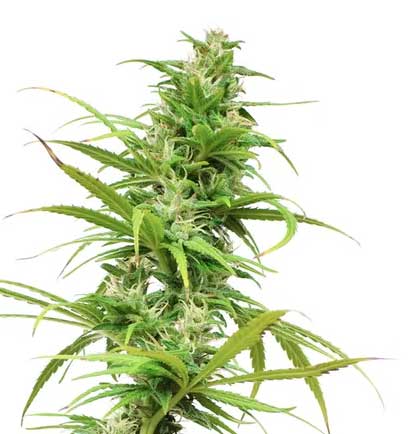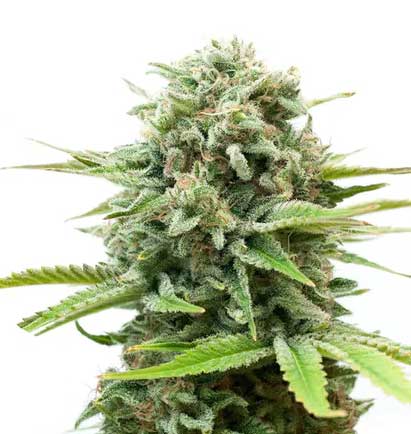
Sativa
Sativa plants have less chlorophyll than their Indica counterpart. It has a higher THC content to Cannabidiol (CBD) ratio and offers a much more energetic type of mood. Sativa is used most commonly to elevate a depressed mood. Generally speaking the Sativa plant is the taller and lankier variety, reaching heights of over 5-6 meters. It is characterized by narrow serrated leaves and loose spear like flower clusters that can be extremely resinous and gooey.
Primarily the effects of Sativas are on the mind and emotions. In this regard they tend to be more stimulating, uplifting, energizing, and creativity enhancing. These benefits can be particularly helpful for the psychological component of many illnesses. Sativas are generally better for daytime use.
Some of the benefits:
- Reduces depression
- Relieves headaches and migraines
- Energizes and stimulates
- Reduces awareness of pain
- Increases focus and creativity
- Reduces nausea
- Stimulates appetite

Indica
Indica has a higher CBD content to THC ratio and induces a more relaxing mood. This is a treatment for anxiety, pain, tremors and many more applications. Indica is most commonly used to induce appetite. Indica plants are normally shorter and stockier plants, reaching 1-2 meters in height and have wide deeply serrated leaves and a compact and dense flower cluster.
The effects of Indicas are predominantly physical although the relief of certain physical symptoms can have an emotional result as well. These effects can be characterized as relaxing, sedating and pain reducing. Indicas are generally best for later in the day or before bed.
Some of the benefits:
- Reduces pain
- Relaxes muscles
- Relieves spasms
- Reduces inflammation
- Assist in sleep
- Reduces anxiety and stress
- Reduces nausea
- Stimulates appetite
- Relieves headaches and migraines
- Reduces pressure inside the eye
- Anti-convulsing agent
- Reduces seizure frequency
NOTE: Many of today’s strains have been cross-bred between the two offering the benefits of both strains while reducing the lesser desired effects of the other.
